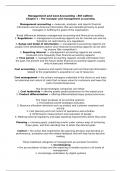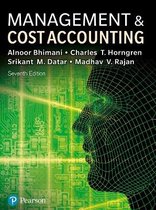Samenvatting
Samenvatting MIDTERM Management Accounting
- Instelling
- Tilburg University (UVT)
Dit is een samenvatting van alle relevante hoofdstukken van het boek: 'Management and Cost Accounting' (8e editie), voor de midterm. Behandelde hoofdstukken: H1 t/m 9, 11, 14, 20
[Meer zien]





